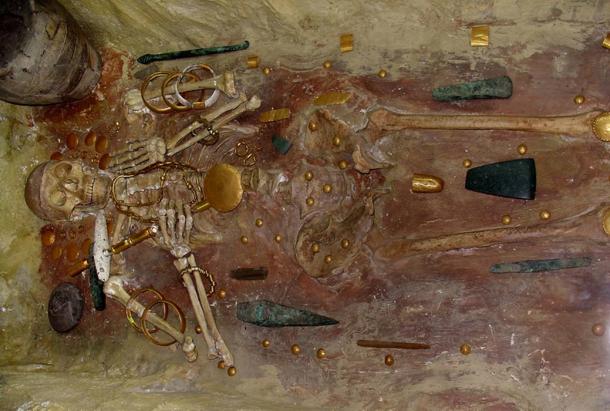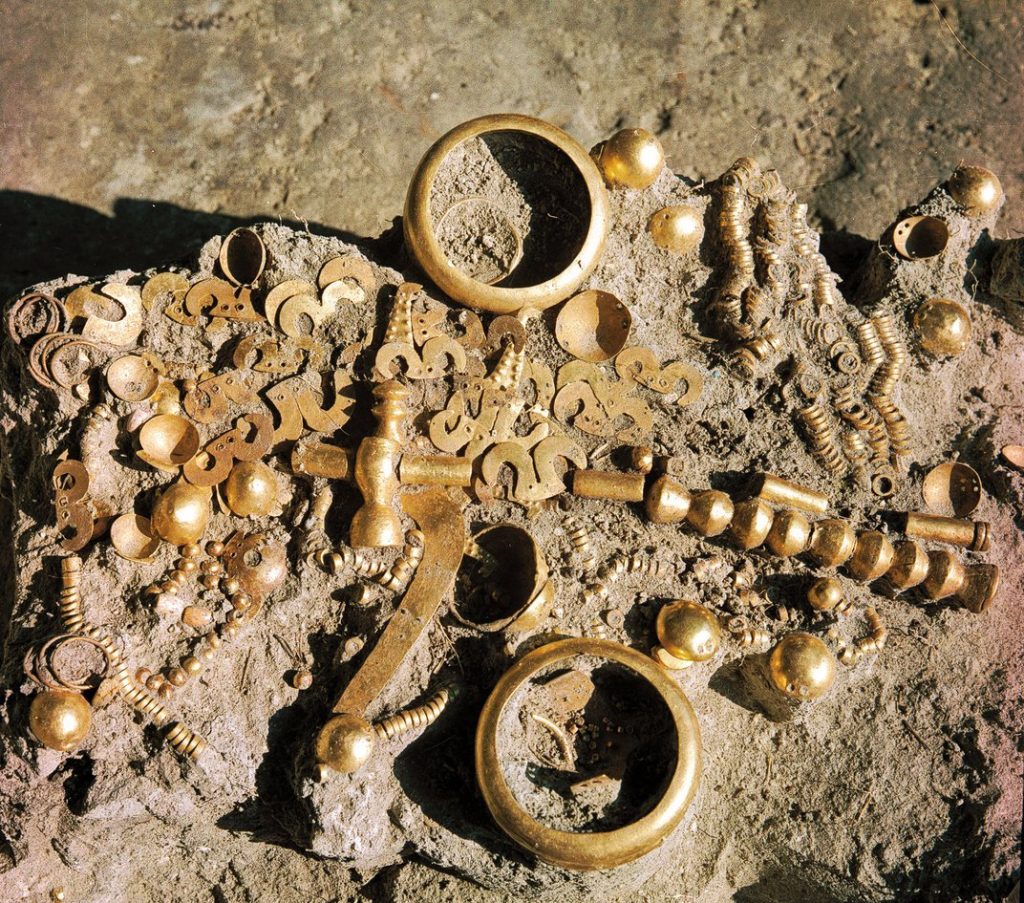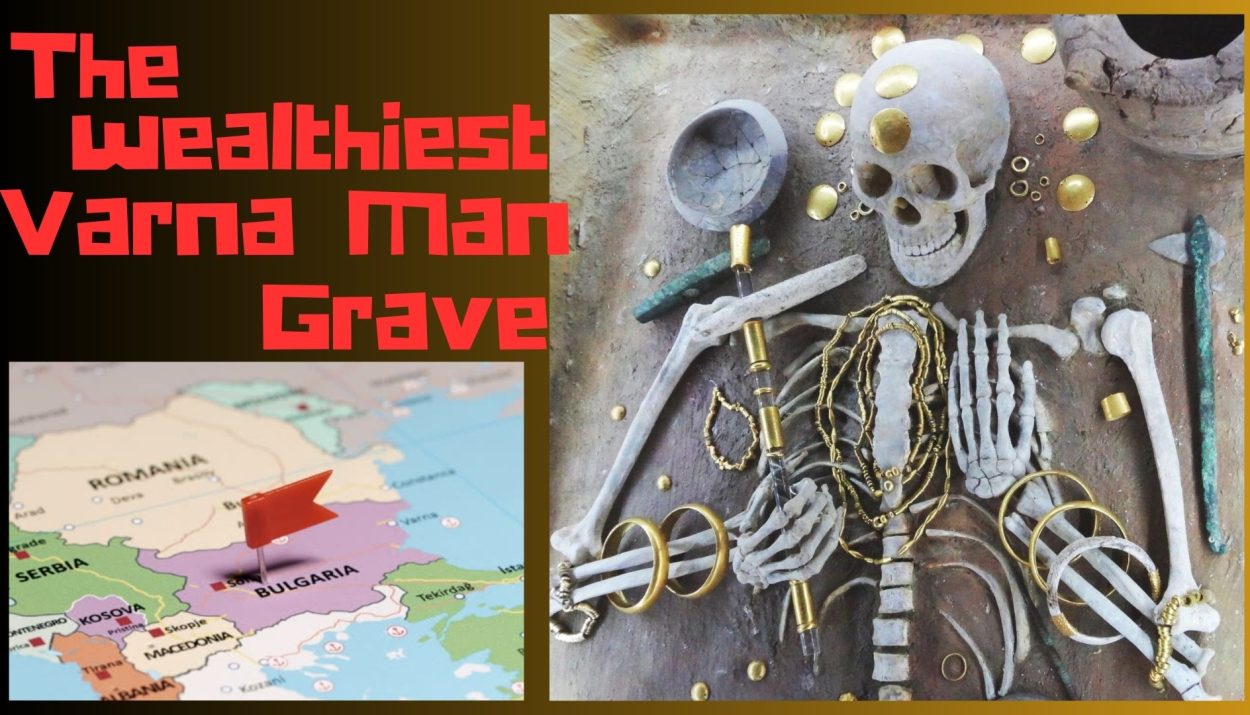The wealthiest Varna Man Grave is part of a burial site from the Copper Age (4600–4200 BC) discovered in 1972 along the Black Sea coast in Varna, Bulgaria. This accidental discovery happened during routine installation work for cables and drainage in an area and later around 300 graves were found in the area. The graves contained an unprecedented concentration of gold objects not found elsewhere during that period.
This remarkable discovery provides valuable insight into prehistoric European society known as the Varna culture. It is believed to have been the first civilization on the European continent or at least the oldest that we know of.
Burials of the Varna culture
It is evident that these individuals held significant power, and what’s even more astonishing is that the cenotaphs, which did not contain any bodies, had more gold than the graves that did. Not only were the individuals buried with gold, but also the majority of the graves contained objects made from a diverse range of materials such as tools or weapons, bone or antler tools, polished stone axes, pottery etc.

The bodies were either in an extended position or in a contracted position. Researchers observed that the positioning of males and females in the graves differed; males were positioned lying on their backs, while females were placed in a fetal position.
The Varna Man Grave is an elaborate burial that contained the remains of an elite male. The grave was filled with over 1,000 gold objects, including a gold sceptre, gold jewellery, bracelets, rings, gold headdresses etc. The grave also contained copper and silver objects, as well as pottery and stone tools. The Varna man was buried with a sceptre, which was considered a representation of high status or spiritual authority, and had a solid gold covering over his genitalia.

The Significance of the Varna Man Grave
The Varna Man Grave is considered one of the most important archaeological discoveries of the 20th century. The grave provides insight into the social, economic, and religious practices of prehistoric European society. The burial site is also significant because it challenges the traditional view that the emergence of complex societies was a result of the development of agriculture.
The gold objects found in the grave suggest that the individual buried in the grave was of high social status. The elaborate burial also suggests that the society was highly stratified, with a clear distinction between the elite and the commoners.

The gold objects would have been crafted by skilled artisans, suggesting that there was a division of labour and specialization of skills. The presence of gold objects in the grave also suggests that the society had a sophisticated trading network.
The gold objects found in the grave were probably used in religious rituals, suggesting that the society had a complex belief system. The gold headdresses found in the grave also suggest that the individual buried in the grave was a religious or political leader.
Archaeological evidence suggests that during the Copper Age, when this resort town was located, the people prioritized gathering human relationships and interconnectedness over just accumulating gold and wealth. The discovery strongly suggests that the ancient residents of the Varna region followed a well-defined system of communicating with the afterlife, which we now refer to as religion.
Read more
Mystery of the Varna Gold: What Caused These Ancient Societies to Disappear?
Varna Man and the Wealthiest Grave of the 5th Millennium BC
Great Excavations: Ivanov at Varna







